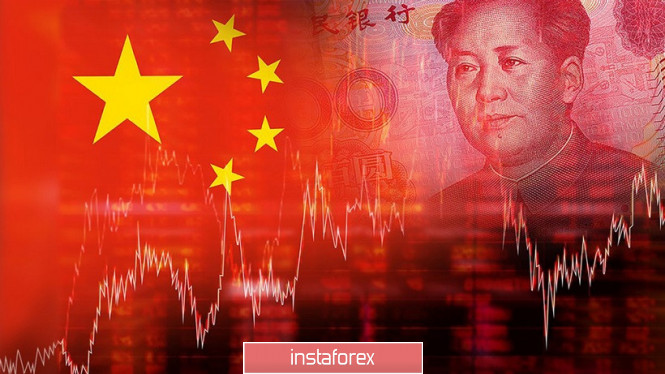For the first time in 11 years, the Chinese yuan overcame the psychologically important level of 7.00 against the dollar. Over the past years, the USD/CNY pair has come close to this target several times, but only now did the price manage to quickly break a significant mark. Given the People's Bank of China's approach to the exchange rate of the national currency, it can be assumed that the trade war between the United States and China has entered a new phase of confrontation. The yuan has become a weapon in the global trade confrontation, and this fact does not bode well for the global economy. The foreign exchange market reacted accordingly: defensive assets began to be in high demand, while the dollar is actively losing its position in almost all pairs.
Events are developing quite rapidly: on Friday the price of USD/CNY fluctuated in its usual range (6.85-6.90), within which the pair has been since May of this year. But today the course has gone up sharply - and not only overcame the target of 7.00, but also consolidated above the indicated level. The US president responded almost immediately to this fact: on his Twitter, he said that China had deliberately devalued its currency to a record low, and there were signs of currency manipulation. Trump warned that this step is a "violation of the rules", and this fact will sooner or later weaken the Chinese economy.

In general, the NBK's motives lie on the surface: in light of Trump's recent decisions, the regulator stimulates the export of Chinese products and removes the "heaviness" of the economy's debt burden. This is far from the first time China has resorted to such methods - for example, in August 2015, China's central bank lowered the yuan against the dollar by more than five percent in three days (from 6.209 to 6.447) in order to stimulate reduced exports. It was so unexpected that the indices of Asian and American exchanges fell by 1-2% in one day, responding to such a sharp move by the Chinese regulator.
Obviously, in this case we are dealing with countermeasures from Beijing against Donald Trump's decision to introduce additional duties worth $300 billion. In fact, the White House decided to impose additional tariffs on almost all Chinese imports, forcing China to conclude a trade deal with the United States. But as you can see, China decided to take the path of further confrontation: by devaluing the national currency, Beijing also instructed state-owned companies to suspend imports of American agricultural products. According to Bloomberg, state-owned companies of China have already stopped purchasing products from American farms in anticipation of the outcome of trade negotiations. It is worth noting that with this step, the Chinese delivered Trump not only an economic, but also a political blow. In those states of America where agriculture predominates (in particular, Iowa, Illinois, Indiana, the Great Plains region), the electoral position of the incumbent president can noticeably shake.
But the devaluation of the Chinese currency will significantly affect the commodity market. Cheap yuan will reduce the purchasing power of Chinese companies. In turn, demand will decrease even more, and this will lead to a reduction in prices. Among the most affected by this scenario will be Australia, Brazil, South Africa and India. Furthermore, this is not an exhaustive list: a decrease in the commodity market will negatively affect the black gold market, the foreign exchange market and the stock market. Again, recall that in August 2015: an unexpected decision by the central bank of China led to a drop in quotations for commodity and steel companies.
The imbalance of the global economy and turbulence in the foreign exchange market will again become a decisive factor for the Fed in the context of monetary easing. In this case, domestic economic statistics will fade into the background: even strong GDP figures and rising inflation will remain in the shadow of global shocks.
The ISM composite index for the non-productive sphere added fuel to the fire. This indicator was released today in the "red zone", following the ISM manufacturing index. The index reached a three-year low, that is, a mark of 53.7 points. It is noteworthy that this indicator is also declining at an active pace for the second month in a row.

Such a fundamental picture exerted strong pressure on the US currency. The dollar index fell to the bottom of 97 points. In addition, the profitability of 10-year-old Treasuries is rapidly decreasing - at the moment the indicator has dropped to 1.775 - the last time it was at this level in October 2016. In turn, the euro-dollar pair shows large-scale correctional growth. Last week, the price was at the bottom of the 10th figure, while today the pair has already tested the 12th price level.
At the moment, EUR/USD cannot overcome the resistance level of 1,1201 (Kijun-sen line on the daily chart), but further escalation of the US-China conflict will allow the pair's bulls to move to the next resistance level - that is, to the level of 1.1260 (lower border Kumo clouds on D1). If one of the US Federal Reserve members voting this year mentions the need to lower the interest rate in September, a decline in the greenback will take on an avalanche-like character - in this case, the EUR/USD pair will be able to quickly return to the area of the 13th figure.
The material has been provided by InstaForex Company - www.instaforex.com